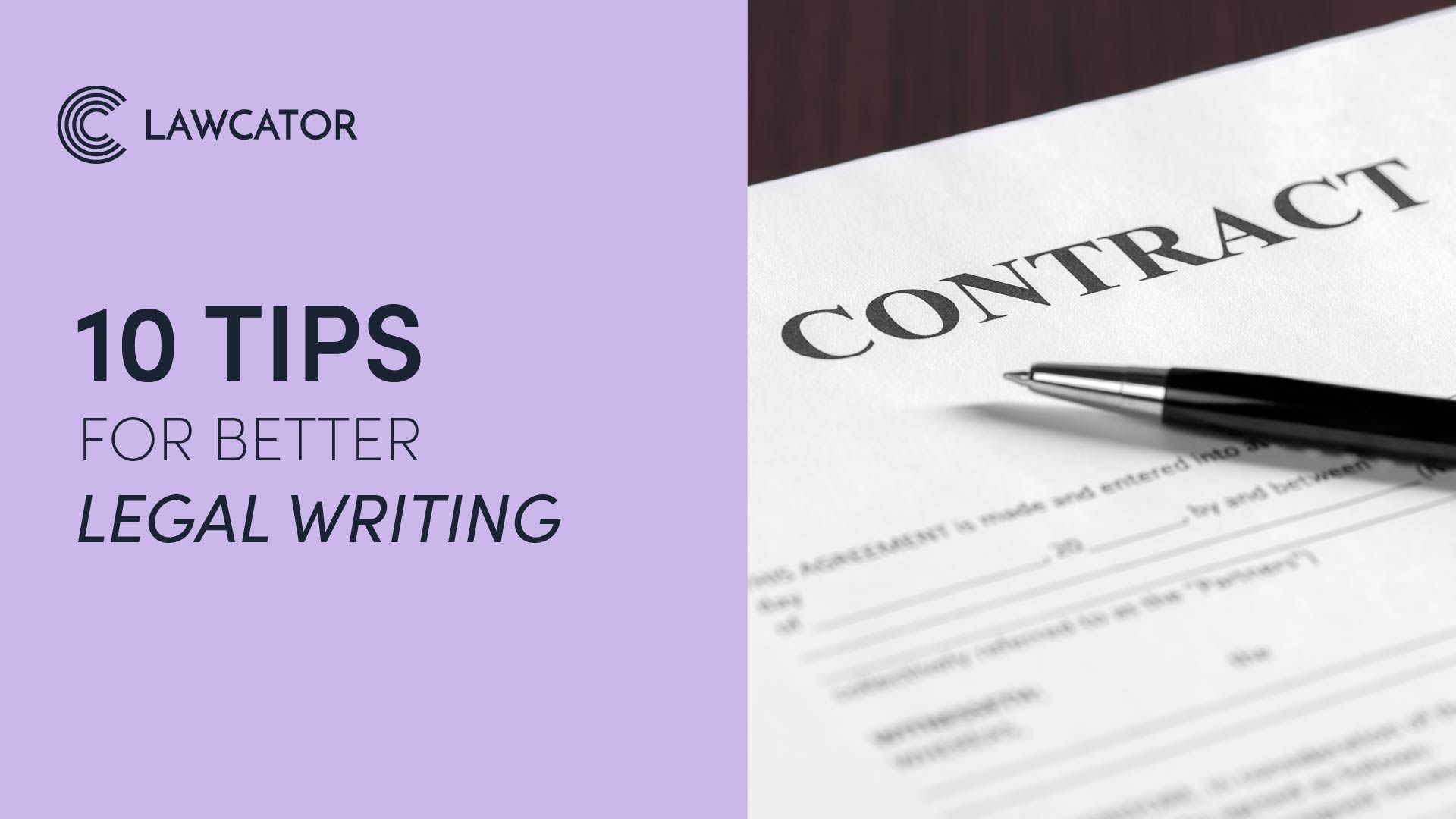
10 Tips for Better Legal Writing
Legal writing is quite peculiar from other forms of writing armed specifically for written communication for legal purposes like filing a case in court, drafting a lease agreement, or a memo. Often, attorneys show off their prowess using long words difficult to understand (the “legalese”), which makes it a lot more complicated for clients to understand.
However, legal writing doesn’t have to be a juggernaut of written communication. When used masterfully, it can convey complicated legal issues while keeping clarity and simplicity. In this article, we’ll run through tips for better legal writing.
1. Return to Writing Basics

Well before anything else, this is the very first step to take. Learning the basics of legal writing is one duty, but being able to improve and keep your writing focused is another thing. Indeed, regular writing has its rules and paradigm, which readers and clients naturally expect to be followed. Being conversant with this concept allows you to deliver a pitch a bar above perfection.
2. Learn from Best Legal Writing Examples
Research examples of what could be defined as an excellently written legal memo in your field. Familiarize yourself with the structure, the tone, and analysis to replicate in your document, then save it to a special folder so you can return to this example when struggling to write a legal memo.
With legal writing, you should not have a single template for every case. Your readers, listeners, whatever the case may be, will inherently differ per instance, and you should always put them into consideration as you work.
3. Have a Proper Grasp of Your Client’s Issue
It is imperative to ask your clients a lot of questions and read up on all related documents while also making notes for tentative research. Ensure you understand your client’s situation, as this will guide you to write a good motion.
Writing a well-detailed memo with your client’s appropriate specifics is a lot better than writing in the abstract.
4. Focus on Clarity

Try to eliminate all forms of ambiguity in your text. Delete any unclear words or statements that may have double meanings. Let all your sentences be clear with easy to understand terms and short sentences. If there is any way to pass a message more concisely, that should always be the best choice.
5. Use Active Words
Active words deliver messages a lot authoritatively, while the use of passive words consistently can downplay your message and take some time for the reader to understand.
Here’s an example: “The defendant did not arrive on time to the courtroom” is a passive statement, when compared to a more active “The defendant arrived late to the courtroom.” A minor difference, yet passive words tend to pile up and increase the chance of misunderstanding some of your statements.
6. Highlight Points with Structure
The highlight of a reader’s mind after a piece is read is what was said at the inception and the conclusion of the memo.
Now, play this to your advantage while writing your memo to include the most pivotal point at the beginning of your sections, the paragraphs that come after, and most importantly, in short sentences. In essence, if you notice you have a topic that weighs in substance to a vast majority of the court’s opinion, this should come first.
7. Quoting Sources Is Good, But Don’t Overdo it
Depending on your instance, overquoting sources in a memo is not a good thing. Paraphrasing and synthesizing facts in your terms within your analysis speaks to most of the readers. If quoting, Judicial Opinions are a trusted source, specifically when the court’s language is favorable to your analysis. Finding the perfect balance here is an excellent tip to becoming a better legal writer.
8. Be willing to accept and Improve on feedback
Attorneys should not be afraid to receive feedback regarding their legal writing. Getting a second opinion even from non-legal professionals doesn’t mean you waste your time or put your authority in danger. It’s in your best interest to leverage this by working on feedbacks to help you become a better legal writer.
9. Include visuals In Your Legal Writing
What if images, graphs, charts, and or bullets will help drive your points a lot accurately? Then use them! Visual representations make it a lot easier to grasp the scenario presented adequately, rather than a long piece of text. However, when using visuals in your writing, you must include “ALT Text”; they must be part of the document’s overall word count.
10. Proofread and Edit
You can never edit too many times; an excellent and well-structured text is habitually a result of effort, patience, constant revision, and editing. To make it easier, edit your paragraphs first, your sentences next, and finally, each word.
Editing does not just spot errors; it fine-tunes your writing and establishes your credibility as a writer.
Proofreading your work will help you spot and take out spelling, punctuation, grammatical, and other language errors that could have been overlooked during the editing process. Experts would advise that you proofread for one issue at a time; you can focus on spelling errors first, then punctuation, and grammar. It helps you concentrate on one problem, eliminate it and face the next one. Read text from the bottom up; you can spot spelling and other errors you could have missed if you were reading correctly.
Conclusion
The best legal writers share one thing in common, consistency. Regardless of the outcome of your first few attempts, keep practicing and you will notice progress after putting in some time and effort.